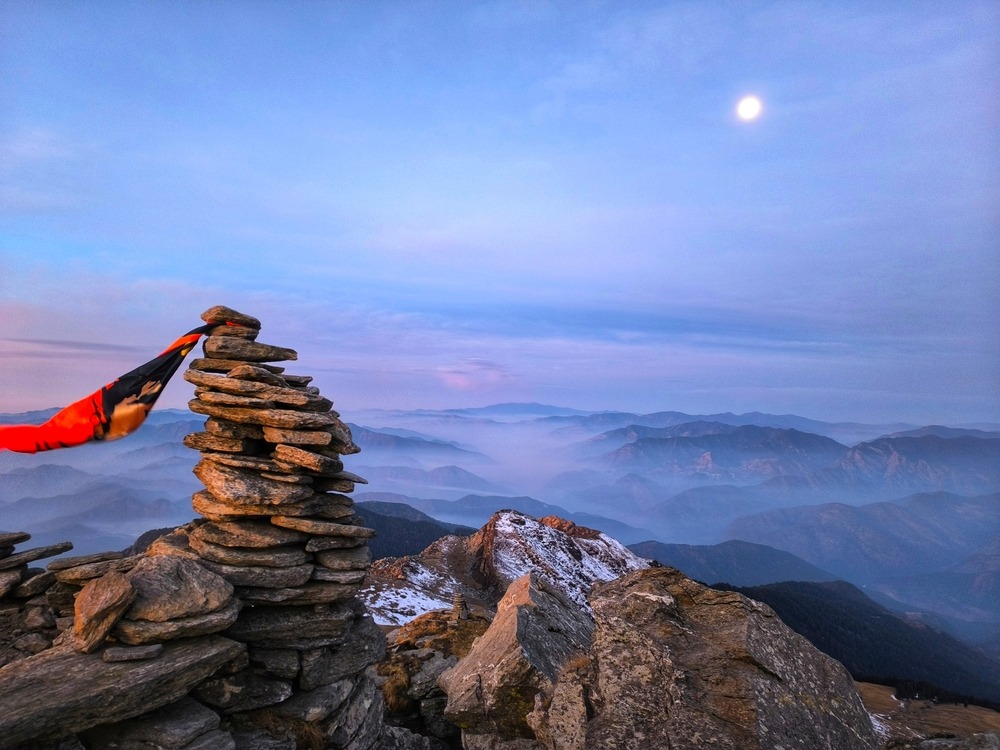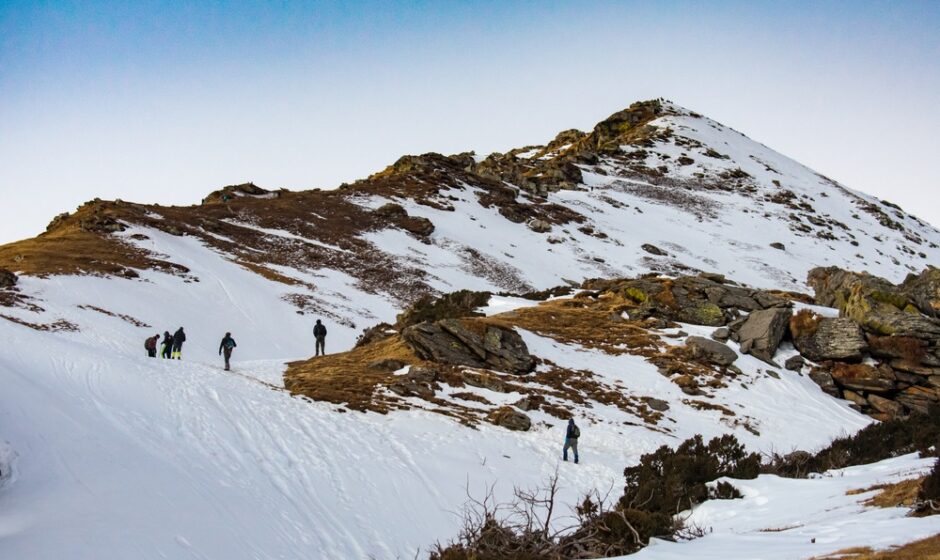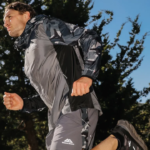Introduction For The Preparation Of Kedarkantha Trek
Preparing for a trek can feel daunting, but it’s one of the most rewarding experiences I’ve ever had, especially when it comes to the Kedarkantha Trek. Nestled in the stunning landscapes of Uttarakhand, this trek is perfect for both beginners and seasoned trekkers. In this guide, I’ll share everything I learned while preparing for this incredible journey, ensuring you have a memorable and safe adventure. The thrill of hiking through snow-covered trails while surrounded by breathtaking mountain views is an experience that every nature lover should have.
As I embarked on my journey, I realized that preparation goes beyond just physical training. It involves understanding the terrain, knowing what to pack, and being mentally ready for the challenges ahead. Trekking is not just about reaching the summit; it’s about enjoying the journey, making connections with fellow trekkers, and embracing the beauty of nature.
Understanding Kedarkantha Trek
Location and Geography
When I first heard about the Kedarkantha Trek, I was captivated by its breathtaking beauty. Located in the Govind Wildlife Sanctuary in Uttarkashi district, Uttarakhand, this trek takes you through mesmerizing meadows, dense forests, and breathtaking views of snow-capped peaks. The terrain varies from lush greenery to rocky paths, making it a treat for nature lovers like me. As I trekked, I marveled at the variety of landscapes, from towering pine trees to wide-open meadows filled with wildflowers.
What really struck me was the sense of serenity in the region. The quiet, undisturbed beauty of the Himalayas offered a welcome escape from the hustle and bustle of everyday life. I often found myself stopping to take in the surroundings, whether it was the sound of rustling leaves or the sight of distant peaks glistening in the sun. This hike is about appreciating the journey and the surroundings, not simply about reaching your goal.
Best Time to Trek

Timing is everything. I found that the best months for trekking Kedarkantha are from December to April. During this time, the region transforms into a winter wonderland, blanketed in snow. I was lucky to trek in January, where the pristine snow created a magical atmosphere. Each step felt like walking through a postcard, and the cold, crisp air was invigorating.
However, each season brings its unique charm. The trails are decorated with vibrant wildflowers in the spring, and the verdant surroundings make for breathtaking views in the summer. Choosing the right time not only enhances the beauty of the trek but also ensures that you have the best weather conditions for a safe and enjoyable experience. Keep in mind that winter treks require additional gear and preparation due to the snow and colder temperatures. I had an amazing experience with The Searching Souls on the Kedarkantha Trek. Their knowledgeable guides made every step of the journey enjoyable and informative!
Physical Preparation
Fitness Requirements
Getting fit for the trek was a key part of my preparation. I realized that a decent fitness level is essential, so I committed to regular cardiovascular exercises like running, cycling, and swimming. Prior to the walk, I tried to exercise for at least thirty minutes five days a week. As soon as I got on the trail, everything changed drastically! Incorporating strength training into my routine also helped build the muscle endurance needed for steep ascents.
Moreover, I learned the importance of practicing on varied terrain. I often hiked local trails to mimic the conditions I’d face on the Kedarkantha Trek. This not only improved my stamina but also familiarized me with the types of physical challenges I would encounter, such as rocky paths and steep inclines. Preparing physically is crucial, but it also boosts your confidence and mental readiness for the trek.
Acclimatization
Altitude sickness was something I feared, so I took acclimatization seriously. The trek reaches elevations over 12,500 feet, which can be a challenge. I spent a couple of days at the base camp, allowing my body to adjust before heading to higher altitudes. Staying hydrated and munching on carbs really helped with acclimatization. Drinking plenty of water and consuming high-energy snacks kept my energy levels up while my body adjusted to the thin air.
Additionally, I learned to listen to my body. Among the telltale indications and symptoms of altitude sickness are headaches, nausea, and dizziness. I made sure to descend if I felt unwell, rather than pushing through. Understanding these signs and taking them seriously is crucial for a safe trekking experience. It’s not just about reaching the summit; it’s about enjoying the trek while prioritizing your health.
Essential Gear and Equipment
Clothing Essentials
Packing the right clothes is crucial. I learned that layering is the best strategy for dealing with changing weather. Here’s what I packed:
- Base Layer: Moisture-wicking shirts and leggings kept me comfortable. I found that lightweight, breathable fabrics made a significant difference in regulating my body temperature.
- Insulation Layer: A fleece jacket and down jacket kept me warm when the temperature dropped. On colder nights, I appreciated having a warm hat and gloves to ward off the chill.
- Outer Layer: A waterproof and windproof jacket was essential to combat the elements. I was grateful for this piece of gear when I encountered unexpected rain and wind on the trail.
Choosing the right fabrics is equally important. I opted for synthetic materials rather than cotton, as they dry quickly and provide better insulation. As I packed, I remembered that having the right gear can make or break your trekking experience, keeping you comfortable and protected against the elements.
Footwear Choices
I cannot stress enough how important good trekking shoes are. I invested in a pair of waterproof boots with solid ankle support, which paid off immensely on rocky terrains. Brands like Salomon and Merrell came highly recommended, and I understood why! During the trek, my boots offered not only comfort but also stability, allowing me to navigate slippery paths confidently.
Breaking in my shoes before the trek was another critical step. I took them on several local hikes to ensure they fit well and didn’t cause blisters. To keep my feet dry and comfy, I also included extra pairs of thick, moisture-wicking socks in my luggage. Trust me, happy feet make for a much more enjoyable trekking experience!
Camping Gear
If you’re camping like I did, ensure you have the right gear. I brought a lightweight, waterproof tent, a quality sleeping bag rated for cold temperatures, and a sleeping mat for insulation from the chilly ground. Setting up camp at the end of a long trekking day was always a pleasure when I knew I had reliable gear.
I also learned to appreciate the value of a good cooking setup. A portable stove, lightweight cookware, and a few simple meals made meal times enjoyable. Cooking under the stars, surrounded by nature, was one of the highlights of my trek. Remember, comfort at the campsite can greatly enhance your overall trekking experience.
Packing Your Backpack
What to Pack
Pack carefully because your bag will be your lifeline on the hike. Here’s what I carried:
- Hydration bladders and water bottles for convenient access. Hydration is crucial, and having water readily available kept me energized.
- Food supplies like energy bars, dried fruits, and ready-to-eat meals. I found that a variety of snacks helped keep my spirits up during long trekking days.
- A first aid kit and personal items like sunscreen and toiletries. It’s incredible how minor details can enhance your comfort level when hiking.
I also packed a lightweight towel, a headlamp for nighttime navigation, and a multi-tool for unexpected situations. Knowing I had the essentials on hand allowed me to focus on the trek without worrying about what might happen if I got injured. It’s all about being prepared so you can enjoy your adventure without unnecessary anxiety.
Packing Tips
Managing weight was essential. I made sure to distribute the weight evenly and kept heavier items at the bottom of my backpack. Compression sacks for my clothes saved a lot of space, and I always had a rain cover handy. I practiced packing multiple times to find the most efficient layout, ensuring quick access to essentials.
Making and adhering to a packing list was another helpful suggestion I learned. This helped me avoid overpacking and forgetting important items. Keeping everything organized within the backpack also made it easier to find what I needed on the go. A properly-filled backpack can significantly impact how comfortable your trekking experience is.
Food and Hydration
Nutrition on the Trail

Eating right is vital for maintaining energy levels. I focused on high-energy foods that were easy to carry, such as:
- Dried fruits and nuts, which provided a quick energy boost and were lightweight.
- Instant oatmeal for quick breakfasts; just add hot water, and I was good to go.
- Dehydrated meals that were light and nutritious. I enjoyed the convenience of just heating them up at the campsite.
Meal planning was an essential part of my preparation. I ensured I had enough calories to sustain me through long days of trekking, and I also included some treats to keep morale high. Having a variety of food kept me excited about meal times and provided the necessary fuel to tackle the trails. Sharing meals with fellow trekkers also fostered a sense of camaraderie and made meal times a social event.
Staying Hydrated
Hydration was a top priority. There are several streams along the Kedarkantha route, but I always purified water before drinking. I carried a portable water filter, which gave me peace of mind while quenching my thirst. I developed the practice of drinking frequently, even when I wasn’t especially thirsty.
To make sure I stayed hydrated, I kept my water bottles accessible and set reminders to drink throughout the day. I also learned that adding electrolyte tablets to my water helped replenish essential minerals lost during exertion. Staying hydrated not only keeps your energy levels up but also helps prevent altitude sickness. I found that keeping a hydration schedule made a big difference, especially on longer trekking days.
Embracing the Experience
Connecting with Fellow Trekkers
Meeting and developing a relationship with other trekkers was one of the most rewarding experiences I had on my Kedarkantha Trek. Whether it was sharing stories around the campfire or encouraging each other during challenging sections of the trail, these connections made the journey even more memorable. I quickly learned that trekking is as much about the people you meet as it is about the places you see.
Making friends on the trail also provided a sense of camaraderie. We shared tips, took turns leading the group, and often motivated one another when fatigue set in. I found that having trekking partners made the experience feel less daunting and more enjoyable. I still keep in touch with several fellow trekkers I met on that journey, and we often reminisce about our adventure.
Cultural Immersion
There are possibilities to engage with local people along the Kedarkantha trail. I took time to learn about the local culture, traditions, and lifestyle of the people living in the region. Visiting small villages and experiencing the warmth of local hospitality was a highlight of my trek. I savored traditional meals, participated in local customs, and even learned a few words in the local dialect, which delighted the villagers.
Immersing myself in the culture not only enriched my experience but also fostered a deeper appreciation for the land I was traversing. Engaging with the local community added layers to my understanding of the region’s history and environment, transforming the trek into a holistic adventure.
Mindfulness on the Trail
Practicing Mindfulness
As I trekked through the stunning landscapes of Kedarkantha, I discovered the power of mindfulness. Taking moments to pause and truly absorb the beauty around me was transformative. Instead of rushing from one landmark to the next, I allowed myself to be present in the moment—listening to the rustle of leaves, feeling the crunch of snow under my boots, and appreciating the breathtaking views.
I often practiced deep breathing techniques, which not only helped me manage physical exertion but also grounded me mentally. This mindfulness practice turned my trek into a meditative experience, allowing me to connect with nature on a deeper level. It’s amazing how being present in the moment can enhance your overall enjoyment and reduce stress.
Capturing Memories
Photography became a cherished part of my trekking experience. I carried a lightweight camera to capture the stunning vistas, unique flora, and candid moments with fellow trekkers. However, I made it a point not to let my desire for photos detract from experiencing the journey. I balanced taking pictures with simply soaking in the beauty of my surroundings.
Reflecting on these photos after the trek allowed me to relive the memories and share my experience with friends and family. Capturing the essence of the trek not only preserved memories but also inspired others to embark on their own adventures. It’s a reminder that every moment spent in nature is worth cherishing.
Post-Trek Reflection
Reflecting on the Journey
After returning from the trek, I took some time to reflect on my experiences. I journaled about the challenges I faced, the lessons I learned, and the beauty I witnessed. This reflection helped me appreciate the journey even more and solidified the memories in my mind. I realized that trekking is as much about personal growth as it is about reaching a destination.
The Kedarkantha Trek taught me resilience, patience, and the importance of connection—both with nature and with others. I came away with a renewed sense of adventure and a desire to explore more of the world around me. Each trek offers a unique set of experiences, and I found myself eager to plan my next adventure.
Setting Future Goals
Inspired by my Kedarkantha experience, I started setting new trekking goals. Whether it was planning to explore higher altitudes or trying new trails in different regions, I felt motivated to continue my trekking journey. The thrill of exploring new landscapes and pushing my limits became a driving force in my life.
I also realized the importance of sharing my experiences with others. Whether through blogs, social media, or in-person conversations, I wanted to inspire fellow adventurers to embrace the beauty of trekking. Each story can ignite a spark in someone else, encouraging them to step outside their comfort zone and experience the wonders of nature.
Conclusion
Preparing for the Kedarkantha Trek goes beyond packing and fitness; it’s about embracing every moment, connecting with others, and immersing yourself in nature’s beauty. My journey was not just a physical challenge; it was a life-changing experience that enriched my soul. Whether you’re a seasoned trekker or a beginner, the lessons learned and memories made along the way are invaluable.
So, lace up those boots, breathe in the fresh mountain air, and set forth on your own Kedarkantha adventure. The mountains are calling, and they promise an experience of a lifetime!
FAQs
What is the difficulty level of Kedarkantha Trek?
The Kedarkantha Trek is considered moderate, making it suitable for beginners with some fitness training. The varied terrain provides challenges, but with proper preparation, anyone can enjoy it.
Do I need a permit for the Kedarkantha Trek?
Yes, trekkers need a permit, which can be arranged through trekking agencies or local authorities. It’s advisable to check the latest regulations before your trip.
Can beginners undertake this trek?
Absolutely! With proper preparation and fitness training, beginners can enjoy this trek. It’s a great opportunity to develop trekking skills in a supportive environment.
What wildlife can I expect to see?
The area is home to diverse wildlife, including Himalayan black bears, leopards, and various bird species. I was fortunate enough to spot some beautiful birds during my trek, adding to the experience.
How do I reach the base camp for the trek?
The base camp can be reached from the town of Sankri, which is accessible via road from major cities like Dehradun. I recommend planning your transportation in advance to ensure a smooth start to your trek.



